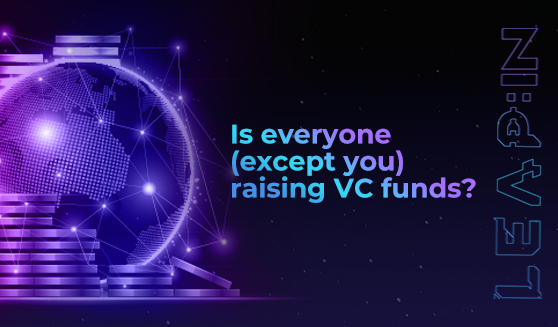
Powerful perspectives from the LEAP community
Discover four powerful perspectives from LEAP 2025 speakers on creativity, clean mobility, education, and personal branding to guide your strategy for 2026.


Each week, we share a selection of our favourite quotes from the innovators that contribute to LEAP. Read, absorb, learn, share; and join us at #LEAP23 for first-hand insights into the future of tech.
Each week, we share a selection of our favourite quotes from the innovators that contribute to LEAP. Read, absorb, learn, share; and join us at #LEAP23 for first-hand insights into the future of tech.
What Al Fahad said:
“Pitching is only about one thing: it’s about getting attention. Don’t expect that at the end of your pitch an investor will take out their chequebook, sign you a cheque…pitching is about getting attention, that’s it. “
We know, we thought it too – isn’t pitching to investors about making money? About raising funds to sustain and scale your startup?
Getting an investment is the long game. But after listening to Hamad Al Fahad’s wisdom on the LEAP:In podcast, we’re willing to accept that if your VC pitch is focused on the money, it probably won’t make the money.
Because he’s right; your first pitch to an investor isn’t going to end with cash in the bank. At worst, it’ll end with…nothing. At best, it’ll end with a request for another meeting. And then there’s the middle ground: you captured the investor’s attention enough so that they’ll remember you, and the ground will be warm for future pitches when your company or idea has been further developed.
To ease your anxiety about the idea of not raising when you pitch to a VC, here are a few companies that either never raised, or didn’t raise until they’d already started generating a lot of revenue:
Those three examples all tell us one thing: VC funding is not an essential component of startup success. Many high-performing businesses bootstrapped their way through growth for several years before even thinking about venture capital money.
And the reason they scaled so effectively without VC support is really very simple: they figured something out. They provided something that people wanted, and were happy to pay for.
The prevalent myth of our times is that startups can only be successful if they raise VC funds. But this just isn’t true (history proves it). This doesn’t mean you shouldn’t pitch, but it means that you shouldn’t pitch too soon – make sure you’ve figured something out before you go to investors, so you can stand out from the crowd and give them the ‘aha!’ moment that will make them remember you.
Don’t panic.
You’re OK. Take a breath.
There are other ways to lead a business to success.
With this in mind, when you’re planning a VC pitch try not to stress about whether or not it’ll lead to investment. Instead, concentrate on a different question: will this pitch win attention? Is it captivating? Does it stand out from other pitches – and if not, how could you change that?

Discover four powerful perspectives from LEAP 2025 speakers on creativity, clean mobility, education, and personal branding to guide your strategy for 2026.

Discover four unexpected insights from LEAP speakers – on tech, leadership, investment, and innovation – that challenge assumptions and inspire new ways of thinking.

The global space sector is hiring faster than universities can produce graduates. If you’re an early-career technologist considering a career in space, this is for you.

Discover four powerful perspectives from LEAP 2025 speakers on creativity, clean mobility, education, and personal branding to guide your strategy for 2026.

Discover four unexpected insights from LEAP speakers – on tech, leadership, investment, and innovation – that challenge assumptions and inspire new ways of thinking.

The global space sector is hiring faster than universities can produce graduates. If you’re an early-career technologist considering a career in space, this is for you.